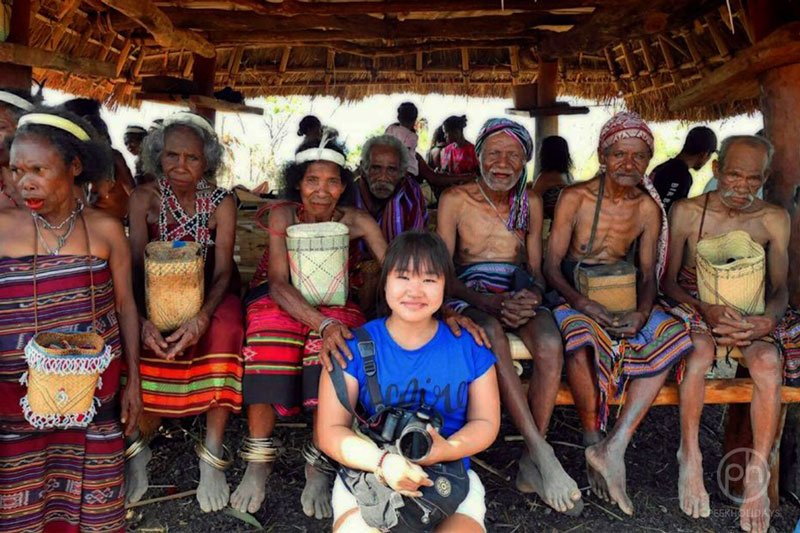If counted by years, I have been diving for at least four years since I got my Open Water certification. Unfortunately, due to the pandemic that came so suddenly, the actual number of years that I dived has turned to only a bit more than two years. Though I can’t get my hands dirty into coral conservation as much as I wish, I am still delighted to see the ongoing progress from time to time that has been shared by the dive company, Livingseas, where I learned about conservation.
It is just too bad that it isn’t that easy getting people to care about conservation…
It is easy for people to fall in love with the ocean and beach – walking on the sand and soaking in the saltwater, enjoying the sea breeze while sipping the fresh coconut, and that sunset or sunrise view on the horizon, ahh, who can ever resist that. It is just too bad that getting people to take care of it as an act of love to the ocean, it is not as easy as that.
Conservation matter may be one of many things that don’t get much attention compared to other issues in the tourism industry. Despite Indonesia being the country with the largest archipelago in the world, a significant number of people have not yet received the information on how important it is to appreciate nature and take care of them.
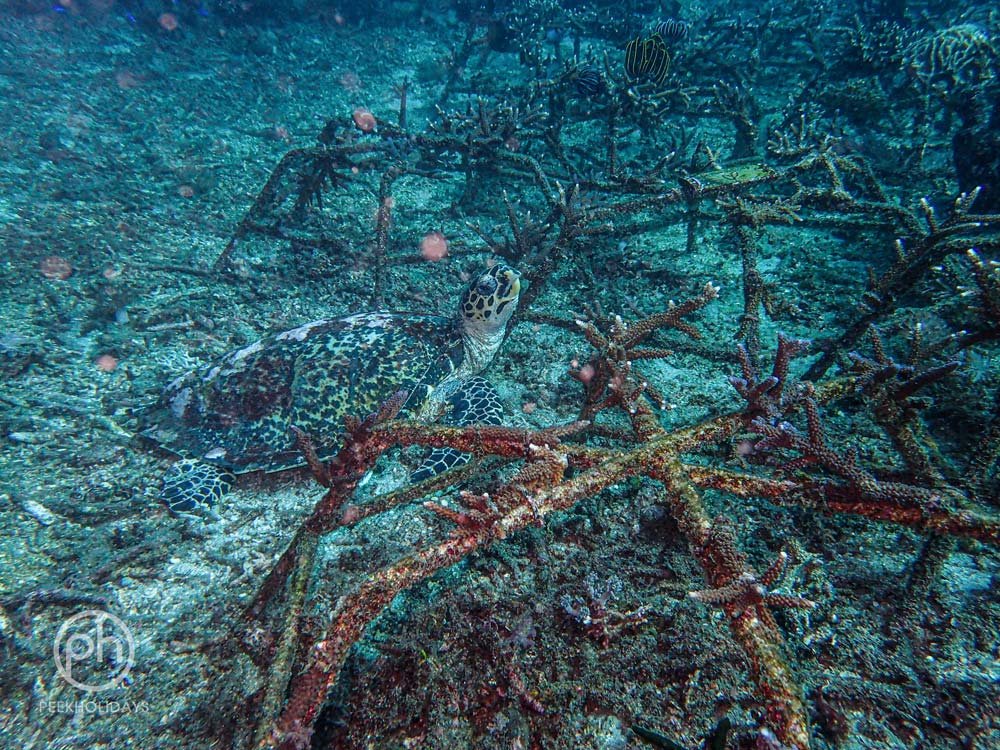
TABLE OF CONTENTS
Coral Planting Sites in Padang Bai – Mimpang & Baung Penyu
I shared the coral planting process before in another post, Coral Planting in Pulau Seribu. If you are new to this, you may want to check that post to give you a clearer picture of how it is being done. It is interesting! Although unfortunately, due to the pandemic and all the restrictions that going on and off for the past two years, the planting site was out of hand already. Hope when the situation has gotten better, Livingseas will restart the project again.
As I am writing this article, it has been more than a year since I joined the coral planting trip in Bali, specifically, in Padang Bai. I am glad I made the time to check the planting sites when I visited Bali last November. There are two sites that Livingseas is currently focusing on in Padang Bai – the first one, Mimpang, has started much longer than the Baung Penyu site. If my friend didn’t tell me the exact location of the sites were, I wouldn’t have noticed the corals that I saw during the dive were planted at all. Because they grew so well, covering the spider structures that worked as bases for the corals to grow.
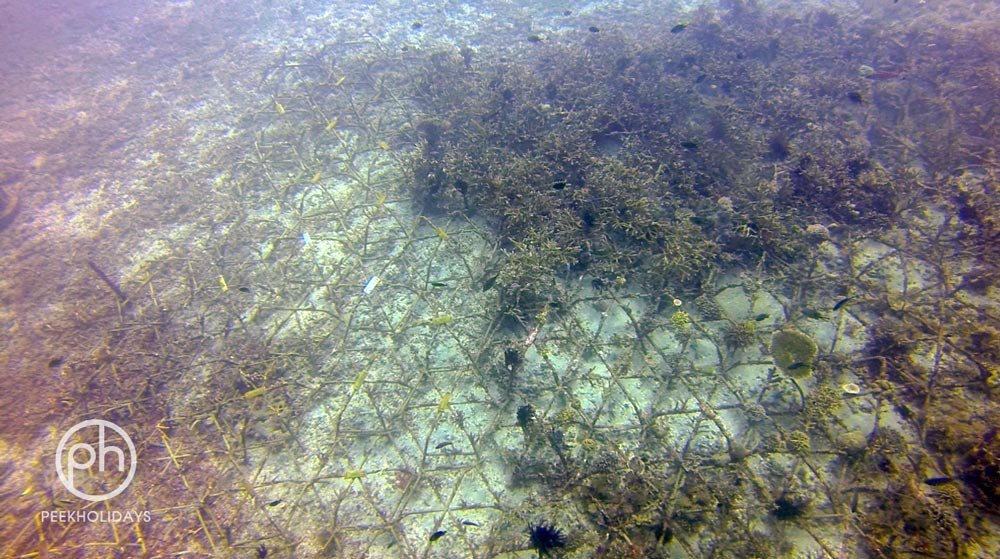
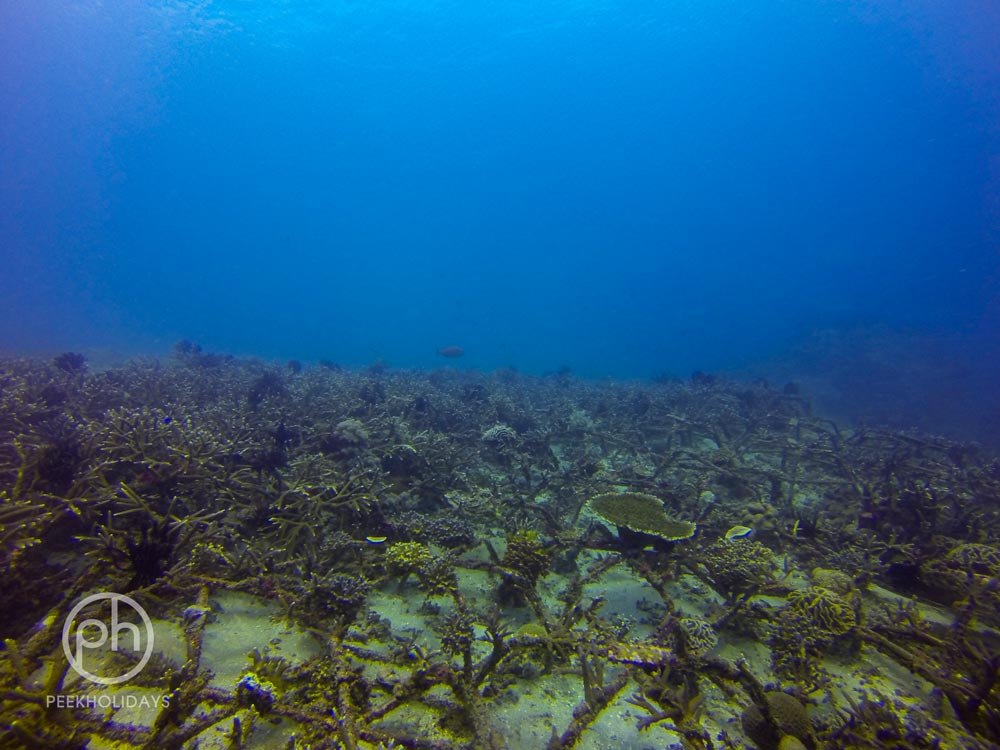
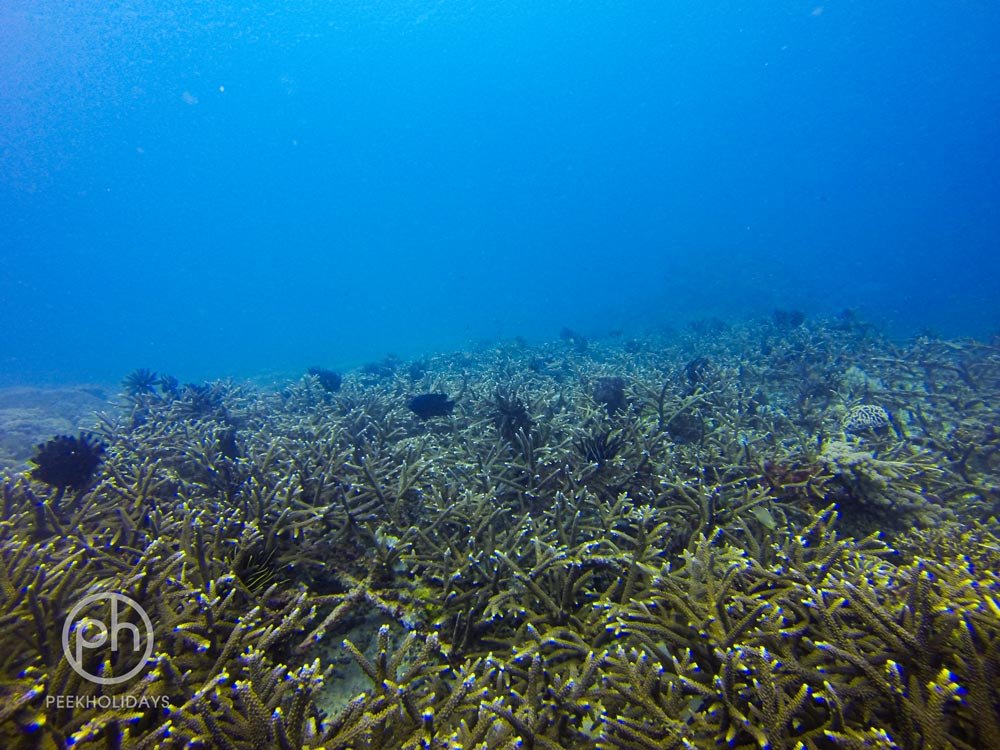

Besides the spider structure, Livingseas also try to reuse glass bottles as the bases. The latest information I got from Leon, one of the key people in this coral conservation project, there are about 67 glass bottles structures in total at both sites. My friends saw Moray Eel babies inside one of the bottles. I think I mentioned in one of my articles before that I am not a fan of seeing long creatures like eels or snakes when I dive. But I am still happy knowing that there are babies! Woots…woots..! They should have already felt safe around there that they decide to settle inside it.
During the dive, I was also fascinated with the swimming Feather Starfish. There are plenty of them resting on the growing corals. Even though we don’t know precisely why so many of them, we are still happy that the planted corals started looking like homes for some fish and marine animals. When I saw this creature for the first time a few years back, I thought they were some water plant or grass because they looked like one when they were not moving. But when they swim, they look mesmerizing, and I just can’t take my eyes off them.
It was a nice day dives. Thanks to Leon for bringing us out!
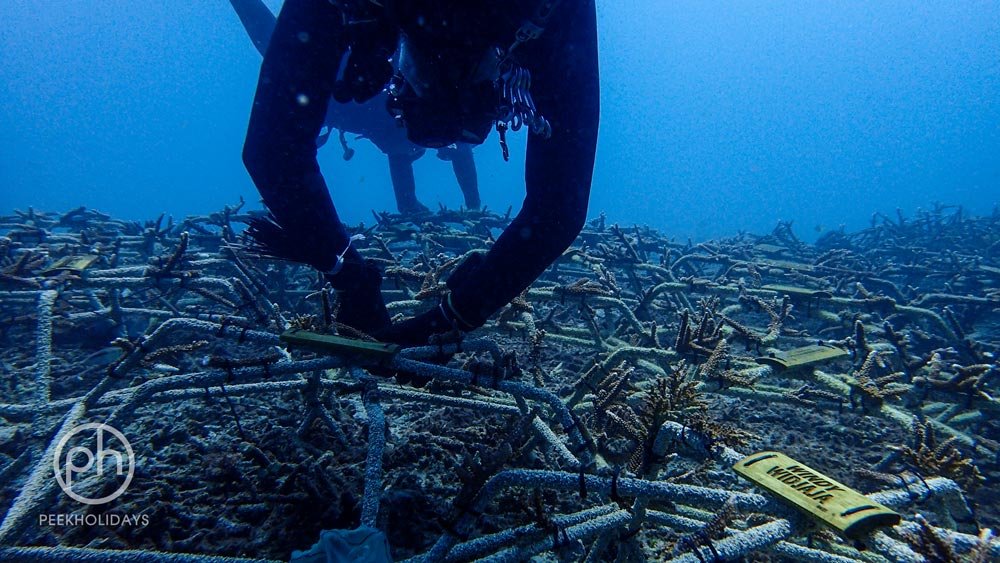


Why Coral Reefs are Important
After years of going to destinations involving ocean activities, I must say that human activities play a part in the destruction. I can’t remember how many times I have seen people swimming or snorkeling in the sea and destroying the coral reefs below them. Probably in many people’s minds, coral reefs are just rocks or dead things found on the seabed. While the fact is obvious, they are not.
“…reefs are often called the “rainforests of the sea.”
Likewise, the forests on the land, reefs are often called the “rainforests of the sea.” About 25% of the ocean’s fish depend on healthy coral reefs. Coral reefs are homes to many marine animals. Fish, seahorses, sponges, and sea turtles are only a few of the thousands of creatures that rely on reefs for their survival. They find food, reproduce, and rear their young in the many nooks and crannies formed by corals.
The problems that occur by the destruction in the ocean will affect not only those who enjoy being in the sea but also every living creature on earth. Yes. Even you who have not been to sea will also get affected. Many factors can be the causes of the problems – be it from us – humans or from nature itself.
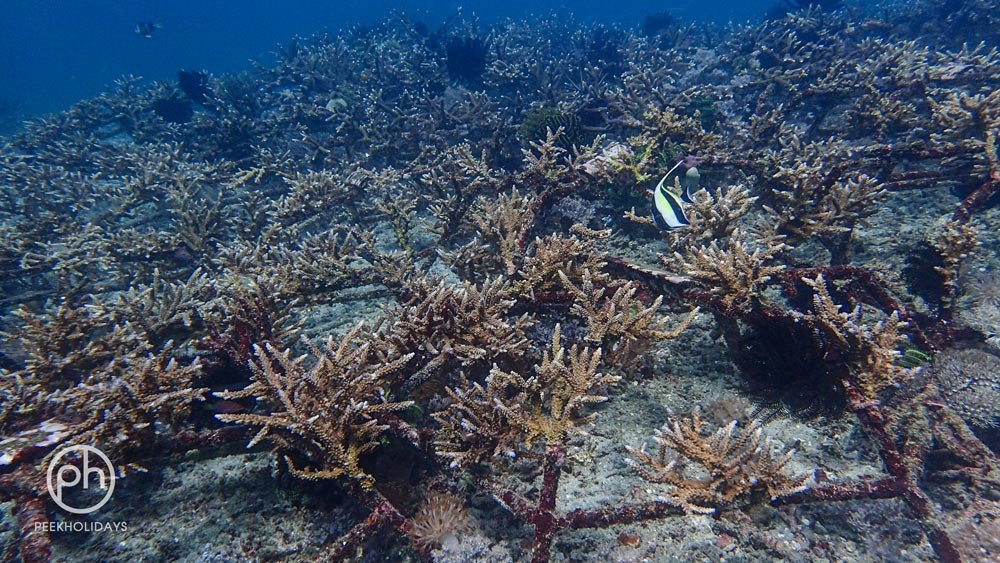
Be Part of Bali Coral Conservation Project and Help Save the Ocean

I often have a conversation with my diver and non-diver friends about conservation or simply taking care of the environment matters. I realize that it is not easy to get people to care about this, even if they are diver. On the other hand, some of my friends who don’t dive, take an action to start changing their bad habits that are harmful to the environment. Conservation is not about the skill, but the willingness to save the ocean. Whether you are a diver or not, you can help to save the ocean.
This coral planting project by Livingseas has been going on for many years and has gone through many trials and errors to find the correct method to plant the corals. Initially, the project is funded through a portion of their trips and donations they receive with a mission to restore 1 hectare of corals in Padangbai, East Bali. The project needs not only hands to plant, but also funds to keep the project going. Together we can do more to save the ocean!
I want to:
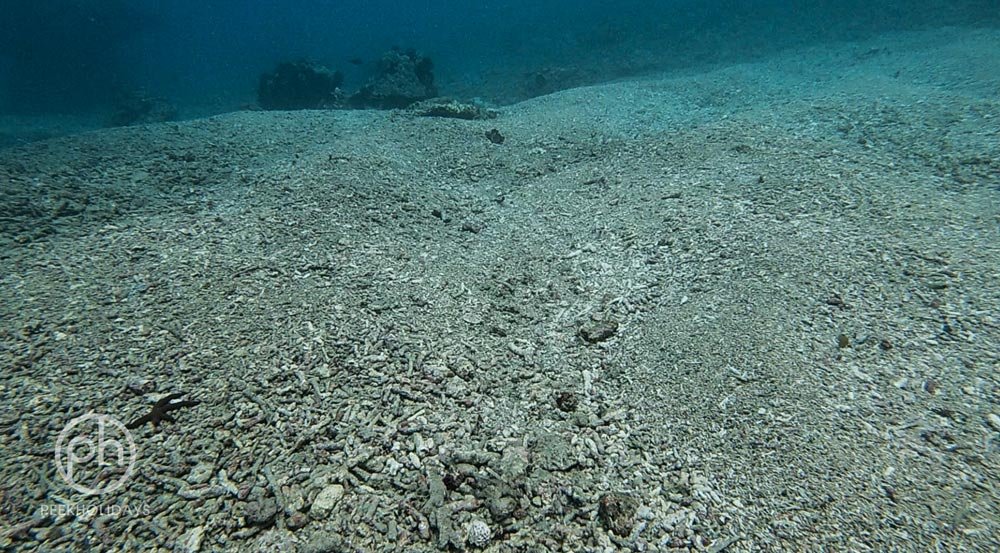


[All Photo Credits: Livingseas Asia]
Check out this video if you are a diver keen to plant the corals yourself and wonder how the planting is being done.
I must say that it isn’t easy as it looks, but we all can do it! Or maybe I should say, even I, the noob diver, can do, so can the rest of you! So, are you game? Let’s do what we can to save the ocean!



